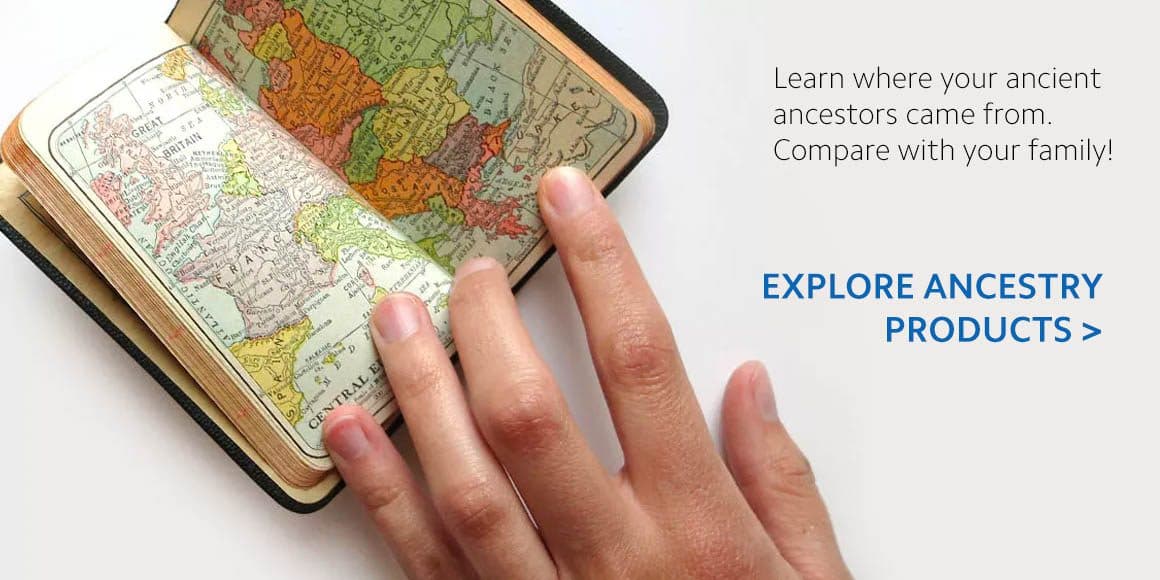We get our DNA from our parents. So how are we all unique?

When talking about DNA and how people inherit different traits, you’ll probably come across the term recombination—a critical process in human genetics that ultimately helps give you a diverse genome with bits of DNA from both your ancient and recent ancestors. Understanding recombination will help you learn about human inheritance, and discover some of the processes that helped make you uniquely you.
Human DNA is 99.9% identical from person to person. Although 0.1% difference doesn’t sound like a lot, it actually represents millions of different locations within the genome where variation can occur, equating to a breathtakingly large number of potentially unique DNA sequences. But how can nearly everyone have a unique DNA sequence if we inherit our DNA from our parents? Wouldn’t it stand to reason that our DNA is the same as theirs? In short, the answer is no.
There are multiple ways our bodies ensure that we have a unique set of DNA that differs from our parents. For starters, you inherit two copies of each chromosome—one copy from your mom and one copy from your dad. This means that your genome (all of your DNA) is already different because it contains chromosomes from both of your parents. This can also help explain why two siblings appear to have different genetic ancestry, since they may get different chromosomes from their parents.
But there is more to the story than the combination of chromosome pairs. The actual sequence of DNA on each of the chromosomes is unique due in part to recombination. To understand this, we have to talk about the process of making gametes, which are also known as sperm or egg cells. One of the traits that makes gametes different from all other cells in your body is they only have one copy of each chromosome,making a total of 23 chromosomes; this is in contrast to most other cells in the body which have two copies of every chromosome, giving them a total of 46. The body does this to make sure that a fertilized egg has the right amount of chromosomes—23 donated from the egg, and 23 donated from the sperm to give a total of 46.
Gametes are made from a special kind of cell dedicated to producing either sperm or eggs. When making the sperm or egg, cells will arrange their chromosomes next to each other, making sure that each chromosome is next to its respective copy. It’s at this point that recombination can happen.
Recombination is a process where sections of DNA are traded between the chromosomes that make up a pair. For example, chromosome 1 from your biological mother will be lined up next to chromosome 1 from your biological father. After recombination, the chromosomes will look somewhat like a quilt because they are made up of DNA from both parents (this process is depicted in the figure below). An important point to note here is that the total amount of DNA on each chromosome should not change in a significant way, because a portion of your mom’s chromosome was traded for the same portion on your dad’s chromosome.


This figure depicts six chromosomes (three pairs, each pair inherited from the person’s parents). Note that recombination only occurs in special cells that generate gametes. Shortly after recombination, the chromosome pairs will be separated and sex cells will be formed.
So if the chromosomes are trading the same sections of DNA, how does this create a unique sequence? The human DNA sequence consists of nearly 3 billion DNA base pairs. The order or these base pairs is nearly identical from person to person, but sometimes there are random changes in the sequence. We call these changes variants. The combination of all of your variants make up the 0.1% difference in your DNA—the part of your DNA that makes you unique from everyone else—and helps give you a unique sequence. This means when chromosome pairs come together, the chromosomes you inherit from your mom are slightly different from the chromosomes you inherit from your dad thanks to the many DNA variants on each of the chromosomes.
Each chromosome you have is a unique quilt of DNA
When recombination happens, the chromosomes are essentially trading DNA variants amongst themselves. This process helps drive evolution by creating a slightly new version of the DNA, which may give your offspring a competitive advantage by giving you variants that help you better metabolize nutrients or blend in with your environment, for example. (Blending in with the environment isn’t very important for modern humans, but for many organisms, it is!)
Each chromosome you have is a unique quilt of DNA, representing segments of the genome that have been passed down from generation to generation, occasionally being shuffled amongst chromosome pairs. This shuffling has helped drive evolution through time, and ultimately has helped write your genome—and the story of you. DNA-based ancestry products (like those offered in the Helix Store) look at these quilted patterns in your DNA to help them trace your genetic heritage back thousands of years, and ultimately help you understand the rich history that lays within your DNA.